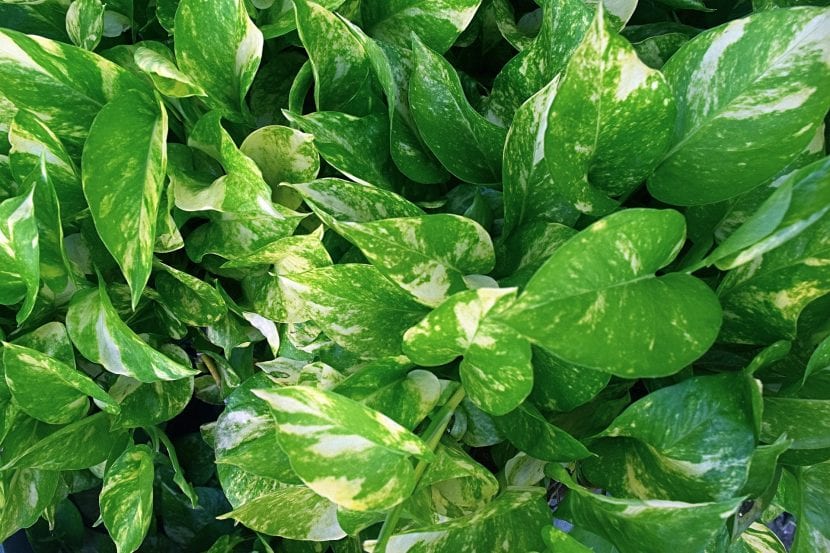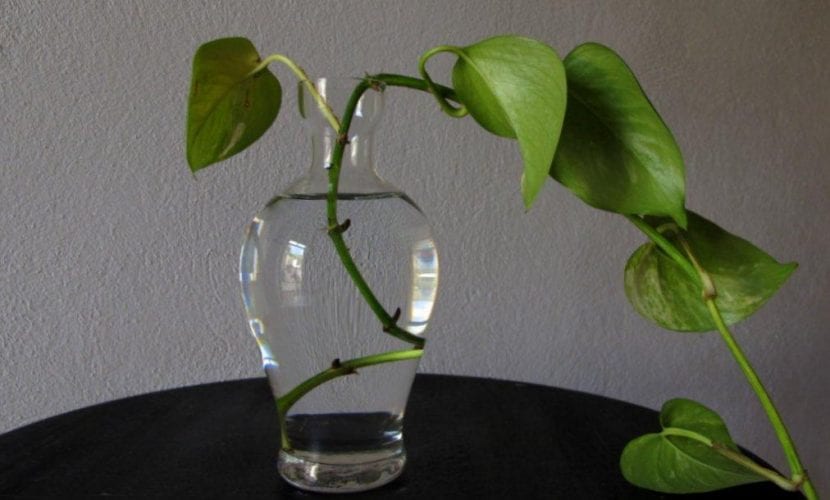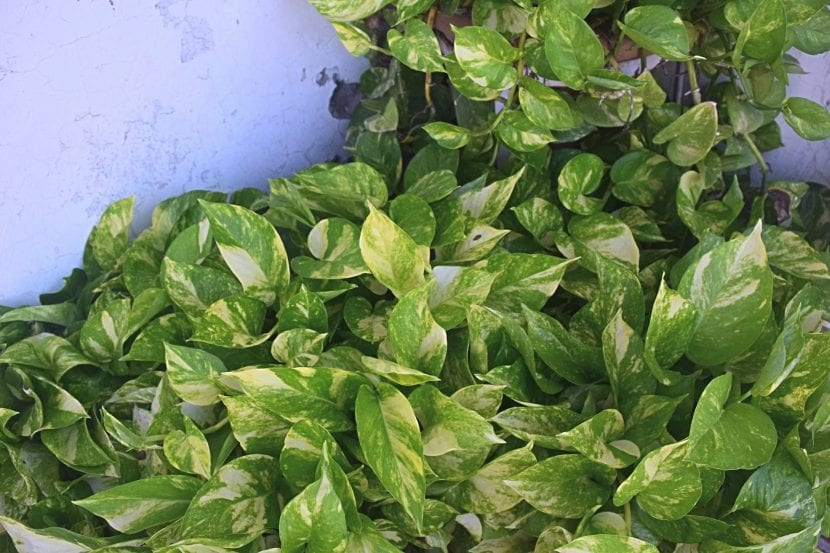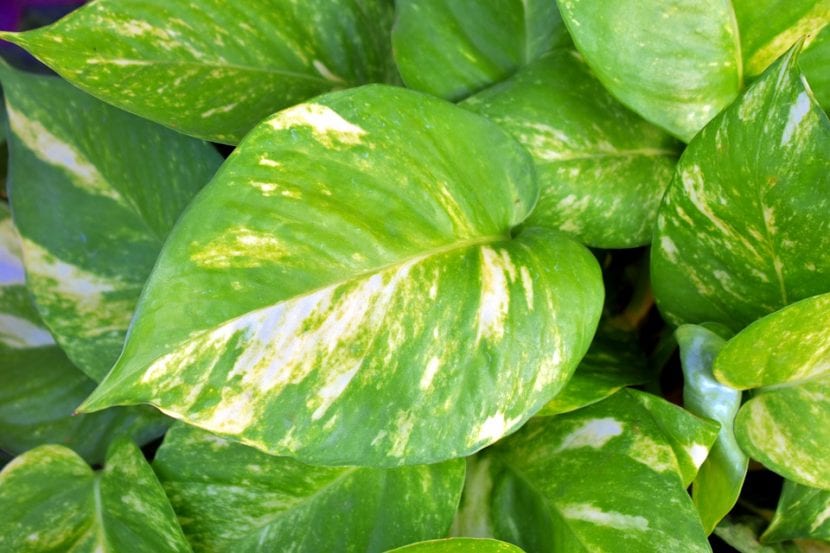
Who does not know the poto? This is a fantastic vine that is usually grown indoors as it cannot stand the cold. It is very easy to care for, so much so that if you do not have much experience with plants and would like to have one with which you can give a little more joy to your home, this is one of the most recommended to start with.
Anyway, as you might have doubts about how to maintain it, then I'm going to tell you everything about him.
Origin and characteristics
Our protagonist is a vine whose scientific name is aureum, but that we all know as poto or potos because it was formerly classified within the genus Pothos. It is native to Southeast Asia, specifically Malaysia and Indonesia, and also New Guinea. It can reach a maximum height of 20 meters if it has a support to climb on, and its stems are up to 4cm in diameter..
The leaves are evergreen, alternate and heart-shaped. At first they are whole, but as they reach maturity they often become pinnate and reach 1m long by 45cm wide. The flowers are almost impossible to see, since the plant usually has problems blooming, but you should know that, as a good aracea it is, they are composed of a whitish stem at the end of which there is a kind of white hood.
What are their cares?

If you dare to have a poto specimen, we recommend providing it with the following care:
Location
- Interior: in a well-lit room, but without direct sunlight.
- Body exterior:: if the climate is mild without frosts or very light it can be kept in semi-shade growing on tree trunks or palm trees.
Earth
- Flower pot: universal culture substrate mixed with 30% perlite. You can get the first here and the second by here.
- Garden: it must be fertile, with good drainage.
Irrigation
The frequency of irrigation will vary depending on the climate and the place where you have it, but in principle it is advisable to water it about 3 times a week in summer and every 3-4 days the rest of the year. Use rainwater or lime-free.
If you can't get it, fill a container with tap water and let it sit overnight. The next day you can use the one in the upper half of said container to water.
Subscriber
From early spring to late summer it is advisable to fertilize potos with ecological fertilizers preferably once a month. Of course, if you have it in a pot, use liquids so that the earth can continue to filter the water.
Multiplication

It multiplies very easily by cuttings in spring. To do this, you just have to cut a piece and place it in a glass of water. Change it and clean the glass daily. As soon as it has emitted its own roots, something that will happen after 2-3 weeks, you can plant it in a pot with a universal growing medium mixed with 30% perlite.
Pests
It can be affected by:
- Mealybugs: they can be cottony or limpet-like. They feed on the cells of the leaves, which appear discolored, deformed or yellow. They can be removed with a brush moistened with pharmacy alcohol.
- Red spider: they are red mites that measure only 0,5cm. They also feed on the cells of the leaves, causing discolored spots and yellow spots on the bundle. They are fought with acaricides.
Management
If it is watered in excess it can harm fungi such as Pythium and Rhizotonia, which cause stem and root rot. There is no cure, but it can be prevented by controlling the risks and not spraying.
Other problems you may have are bacteria of the genus Erwinia and Pseudomonas, which cause watery spots on the leaves. There is also no cure.
Pruning
It is very important to prune it, especially if it is kept indoors, since this way its development is controlled. The way to proceed is very simple: With scissors previously disinfected with pharmacy alcohol or with a few drops of dishwasher, the stems are trimmed as much as necessary.
Cleaning
If grown indoors the leaves must be cleaned at least once a week, either with a dry cloth or dampened with a little lime-free water. So it will look beautiful and you can continue to breathe and photosynthesize without problem.
Rusticity

It is very sensitive to cold. The temperature should not drop below 10ºC, but you should also know that if it is, for example, in a very protected garden, it can withstand well up to 0º and even some sporadic frost of up to -1ºC. The only thing to bear in mind is that in these conditions the leaves are damaged, and that they may even fall, but in spring it sprouts strongly.
What did you think of the poto? It's very pretty, right?

Thanks for the article. Yes, it is very pretty!
Greetings.
Hello Alejandro.
And the best thing is that it is very easy to care for: it only needs a few waterings a week, and little else.
Highly recommended.
Regards!